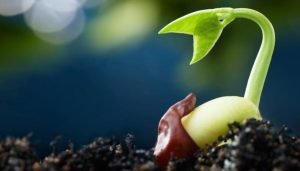6.1 – Overview and Learning Objectives
Overview

Seed is not always entirely used up each planting season. Seed that was purchased or grown this year may require storage to be carried over to subsequent planting seasons. When seed is carried over, it is expected to be of the same quality as seed that was recently produced.
As a result, understanding the best possible methods for carrying over seed to maintain high germination and viability is crucial.
Learning Objectives
After completing this lesson, you will be able to:
- Distinguish between the different mechanisms of seed dormancy.
- Describe the causes of seed deterioration.
- Distinguish between short-term and long-term storage.
- Explain the basics of optimal seed storage methods and conditions.
- List proper inventory management and the causes of excess seed carryover.

Earn an industry recognized micro-credential at: CSU Upskill.
Great definition of a seed....
Seed that is held in inventory from one growing season to the next. It can still be used if its viability and vigor remain acceptable.
The resumption of active growth by the embryo culminating in the development of a young plant from seed.
Seed that is alive; seed that can grow; containing structures and substances including enzyme systems that give it germination potential.
The process by which seeds lose their viability and vigor over time due to environmental factors, such as temperature, humidity, and seed aging.
The storage of seeds for a shorter period, typically less than a year, where viability is maintained without the need for strict environmental controls.
The practice of storing seeds for extended periods, often in controlled environments with low humidity and temperature, to preserve seed viability.
The total quantity of seeds available for use, sale, or distribution at a given time.
